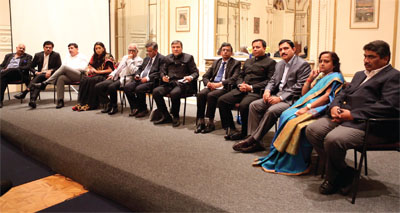
BIKANER- If ever beauty has bloomed in a desert, it has been at Bikaner. Founded in 1488 AD by Rao Bika Ji, it’s located in north west part of Rajasthan state in INDIA.The imposing palaces, beautiful and richly sculptured temples of red and yellow sand stones display some of the finest creations of Rajput civilization. It’s lust for “dessert”or affection for “desert” that tickles every heart to visit Bikaner.
TOURIST ATTRACTIONS
Junagarh Fort
This fort was built by Raja Rai Singhji, the sixth ruler of Bikaner, who ruled form 1571 to 1612 AD. Raja Rai Singhji could Marshal the revenues of a Kingdom increased by the conquest of half Marwar and grant of half Gujrat and made use of ample funds from Jodhpur and Western Deccan for the construction of this fort.
A contemporary of Mughal Emperor Akbar and Emperor Jehangir, he held a very high rank in Junagarh Fort, Bikaner the Imperial court. As a reward for this services as military commander, he was granted fields of Gujrat and Burhanpur by the Emperor. During his tenure in imperial service he traveled far and wide which gave him vision and great ideas about art and architecture and we can see how meticulously these ideas were incorporated in the architectural styles of his building in Junagarh fort.
Lallgarh Palace
The architectural masterpiece in red sandstone was built by Maharaja Ganga Sing (1881 AD-1942 AD) in memory of his father Maharaja Lall Singh between 1902 – 1926.This magnificent palace is an example of pure Rajput martial architecture. Designed by Sir Swinton Jacob, this palace has several grand halls, lounges, cupolas and pavilions.
The exotic palace has magnificent pillars, richly carved fire mantles , Italian colonnades and motif of lotus in full bloom, adding to the magic of this jewel of the desert. Walls of palaces are reminiscent of the past vintage etchings, hunting trophies and old portraits. The treasure trove where the guests can spend hours ‘walking in the past’.
The palace has it’s own museum and library (the fourth largest in the world), clay pigeon trap and skeet shooting traps facilities at adjoining ranges. Palace has wild peacocks spreading their feathers at almost every step flowering rows of bougainvillea. Bikaner royal family still lives in part of the palace. A portion of palace is now a hotel.
Gajner Palace
Gajner Palace -a summer resort of Bikaner Maharajas -has often been described as ‘an incomparable jewel in the Thar desert’. Built by Maharaja Ganga Singh ji of Bikaner, palace stands on the embankment of a lake .The palace was used by Maharaja for grand shoots and lavish entertainment.
Royalty, both Indian as well as international, Viceroys and other dignitaries have been entertained at this grand palace. The architecture of Gajner palace is truly outstanding. Built in red sandstone with intricately carved pillars, jharokhas and screens , the craftsmanship here is amazing.
Palace is surrounded by beautiful wooded area, now a preserved sanctuary which provides shelter to chinkaras , blackbucks, blue bull (neel gai) and flocks of imperial sand grouse. A part of palace has been transformed into hotel.
Prachina Museum
Keeping with the rich and glorious past of Bikaner, daughter of present Maharaja Narendra Singh Ji recently (Oct, 2000) opened a museum “PRACHINA”. It is an endeavor to recreate the past and highlight the pace of modernization activated with times and a representation of regional museum as there was a lacuna of courtly tradition and craft Museum in Bikaner.
“PRACHINA” is an effort to highlight the aristocratic patronage which thrived and survived in Bikaner. This museum hopes to build and develop a cultural center to revive the dying craft of Bikaner and amalgamate it to present life.
Royal Cenotaphs
Devi Kund sagar is situated 8 km in the east of city. The members of ruling family of Bikaner subsequent to Jet Singh, the great grandson of Rao Bikaji, have been cremated here.On the sides of reservoir of water lie the Royal cenotaphs of rulers of Bikaner dynasty from Rao Kalyan Singhji to last Maharaji Karni Singhji as well as those of their wives and other important members of families.
There are cenotaphs (Chhatries) of 22 SATIES of royal family prior to Maharaja Gaj Sigh Ji (1745-1787). There is also one cenotaph of a SATA (male sati) of a ruler.The architecture of the cenotaphs is the prime attraction of this place. Maharaja Surat Singh’s Chhatri is built entirely in white marble with spectacular Rajput paintings on its ceiling. Close by is a Dargah of Rustal Ali Shah Peer which is held in high esteem by muslim community and other people.






Be the first to comment